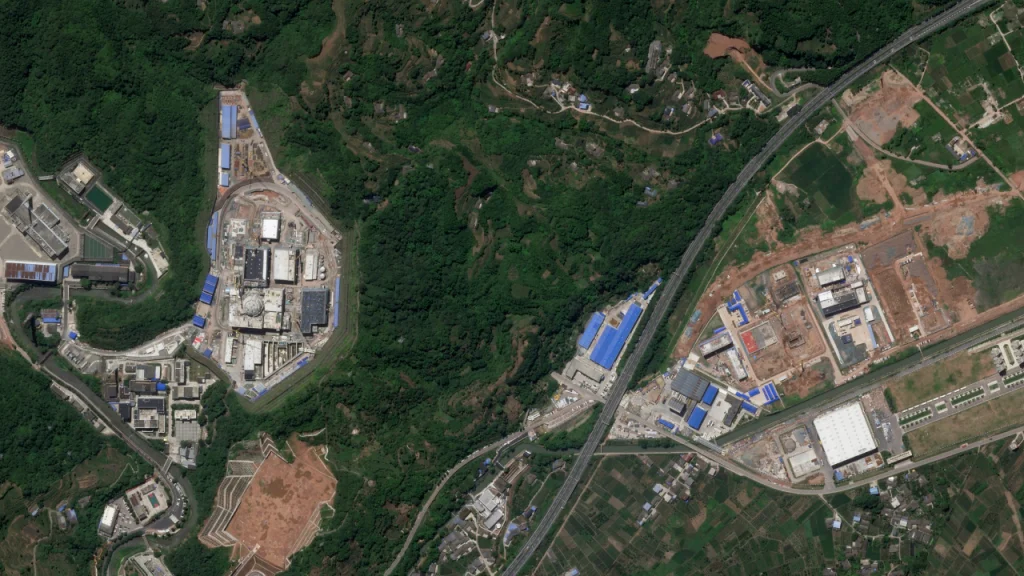China has made significant progress in developing a nuclear-powered aircraft carrier by constructing a land-based prototype nuclear reactor for a large surface warship at the Longwei site in Sichuan. This project is part of China’s plan for naval nuclear propulsion, as the country aims to enhance its navy’s capabilities and become a “blue-water” force that can operate globally. The addition of nuclear-powered carriers to the fleet would place China in an exclusive group of first-class naval powers, currently limited to the United States and France. This development symbolizes national prestige for China’s leadership, fueling domestic nationalism and elevating the country’s global image as a leading power.
Researchers from the Middlebury Institute of International Studies uncovered the construction of a prototype reactor for a large warship at the Longwei Project in Leshan, China, through satellite imagery and public documents. The reactor, housed at Base 909 near Chengdu, is expected to be operational soon and appears to be part of a project for a nuclear-powered aircraft carrier. The facility is controlled by the Nuclear Power Institute of China, a subsidiary of the China National Nuclear Corporation responsible for reactor engineering research and testing. The project, referred to as the Nuclear Power Development Project, involves the procurement of reactor equipment for installation on a large surface warship, indicating efforts toward developing a next-generation aircraft carrier.
While the research findings confirm China’s development of a nuclear-powered propulsion system for an aircraft carrier, they do not provide details on when such a carrier might be operational. China currently operates conventionally powered carriers, including the Liaoning, Shandong, and Type 003 Fujian, which are gradually improving in design and capabilities through advancements like electromagnetic launch systems. There is speculation that China may produce both a Type 003 and a nuclear-powered Type 004 carrier simultaneously to expand its capabilities. Developing nuclear propulsion for future carriers will enable China to operate advanced systems and enhance its naval power projection capabilities, particularly in strategic areas like the First Island Chain.
Chinese President Xi Jinping has prioritized building a “first-class” navy and becoming a maritime power as part of the country’s rejuvenation strategy. The People’s Liberation Army Navy, already the world’s largest navy with over 370 ships and submarines, is focused on transitioning from defense in near seas to protection missions in far seas. China’s powerful shipbuilding capabilities allow it to produce hundreds of vessels annually, although it still lags behind the U.S. Navy in certain aspects, including the number of nuclear-powered carriers. The U.S. has 11 carriers, enabling it to maintain multiple strike groups deployed globally at all times. However, the Pentagon has expressed growing concerns about China’s rapid modernization of its fleet, including the development of new carriers, which enhances China’s air defense coverage and operational range in the maritime domain.
The U.S.-China rivalry in maritime power projection is intensifying as China seeks to challenge the U.S.’s dominance in the Indo-Pacific region. China’s naval advancements, including the development of nuclear-powered carriers, pose a significant challenge to U.S. naval operations and strategic interests. Chinese carriers equipped with advanced capabilities will extend the country’s influence and operational reach in key areas, complicating U.S. military intervention in regional disputes. As China continues to strengthen its navy and pursue nuclear propulsion systems for its carriers, the balance of power in the maritime domain could shift, leading to increased competition and tensions between the two countries.


